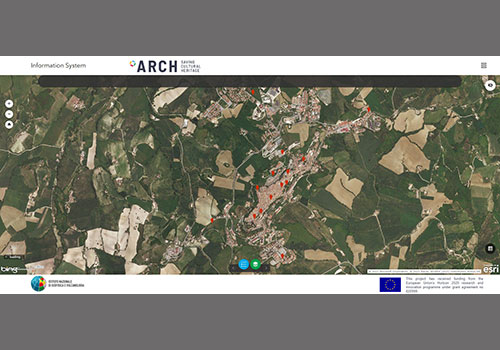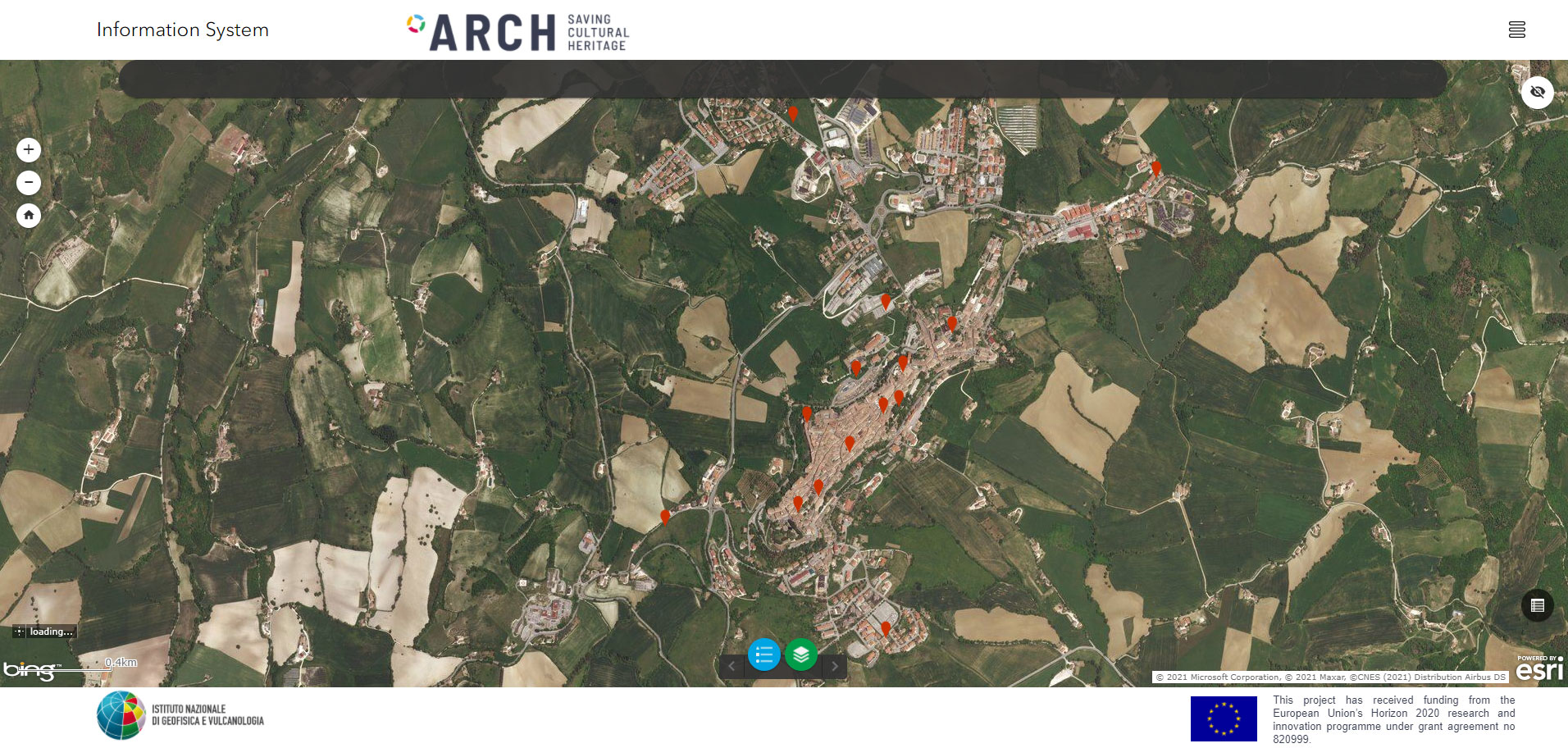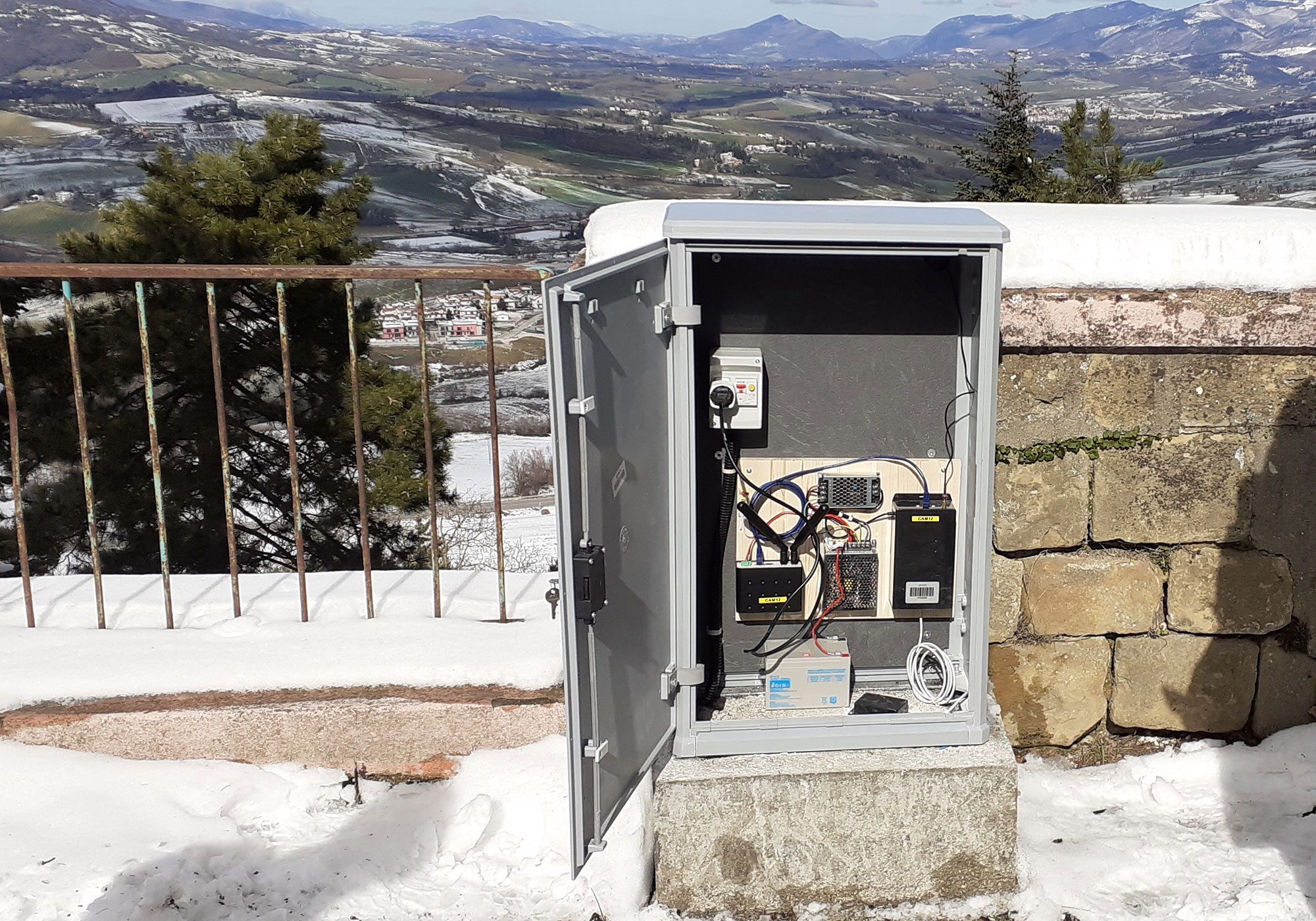Una nuova rete per il monitoraggio sismico di un’area urbana con un patrimonio di elevato valore storico-artistico
E’ stato realizzato a Camerino (MC) il primo Osservatorio Sismico Urbano del Centro Italia.
Costituito da 14 stazioni accelerometriche basate sulla moderna tecnologia MEMS (Micro-Electro-Mechanical Systems), l’Osservatorio è stato messo a punto nell’ambito del Progetto H2020-ARCH, coordinato per l’INGV dai ricercatori Antonio Costanzo e Maria Fabrizia Buongiorno, al fine di creare una rete per il monitoraggio sismico ad alta densità in un’area urbana in cui sono presenti numerosi beni storico-architettonici e culturali.
Al verificarsi di un forte terremoto, la nuova rete di monitoraggio fornirà in brevissimo tempo, le informazioni relative ai livelli di scuotimento nell’area. Tali informazioni saranno fondamentali durante una crisi sismica per una migliore gestione degli interventi di soccorso della Protezione Civile e per supportare la messa in sicurezza del patrimonio.
I dati acquisiti dalla rete urbana di Camerino, opportunamente pre-processati, confluiranno alla piattaforma informativa ARCH-THIS (Threats and Hazard Information System) realizzata da INGV, che andrà ad alimentare l’ARCH-DSS (Decision Support System) sviluppata da ENEA nell’ambito del progetto.
La rete sismica urbana è frutto di un team dell’INGV costituito dal personale dell’Osservatorio Nazionale Terremoti della sede di Palermo e della sede di Rende (CS), che ha visto la partecipazione dei tecnici Stefano Speciale, Giovanni Vitale e Sergio Falcone e dei ricercatori Antonino D'Alessandro e Antonio Costanzo.
La realizzazione della rete dell’Osservatorio Sismico Urbano di Camerino, messa a punto in tempi brevissimi, è stata possibile grazie ad un attento studio preliminare, che ha permesso di valutare approfonditamente i vari aspetti logistici e tecnici, ed al supporto dell’amministrazione comunale e dell’Università di Camerino, che hanno predisposto i siti ospitanti le stazioni accelerometriche.
Nei prossimi mesi saranno perfezionate tutte le altre parti costituenti l’Osservatorio Sismico Urbano: dall’acquisizione, al trasferimento dei dati e al loro processamento in tempo reale per l’estrazione dei parametri ingegneristici utili a caratterizzare le azioni sui beni culturali.
Inoltre, le registrazioni del moto al suolo verranno elaborate per realizzare delle mappe di scuotimento a livello urbano che tengano conto della risposta sismica locale.
Le informazioni estrapolate dai dati del monitoraggio serviranno a dettagliare le analisi del sistema di supporto alle decisioni relative al potenziale danneggiamento indotto sul patrimonio culturale, anche tenendo conto delle stime di vulnerabilità.
INGV, the first Urban Seismic Observatory of Central Italy was built
A new network for the seismic monitoring of an urban area with a heritage of high historical and artistic value
The first Urban Seismic Observatory in Central Italy was built in Camerino (MC).
Consisting of 14 accelerometric stations based on modern MEMS (Micro-Electro-Mechanical Systems) technology, the Observatory was developed as part of the H2020-ARCH Project, coordinated for INGV by researchers Antonio Costanzo and Maria Fabrizia Buongiorno, in order to build a network for high-density seismic monitoring in an urban area where there are numerous historical, architectural and cultural assets.
Upon the occurrence of a strong earthquake, the new monitoring network will provide information relating to the levels of shaking in the area in a very short time. This information will be essential during a seismic crisis for better management of the Civil Protection rescue interventions and to support the safety measures on the heritage.
The data acquired from the Camerino urban network, suitably pre-processed, will flow into the information platform ARCH-THIS (Threats and Hazard Information System) created by INGV, which will feed the ARCH-DSS (Decision Support System) developed by ENEA in the scope of the project.
The urban seismic network is the result of an INGV team made up of staff from the National Earthquake Observatory, the Palermo office and the Rende (CS) office which saw the participation of the technicians Stefano Speciale, Giovanni Vitale and Sergio Falcone and the researchers Antonino D'Alessandro and Antonio Costanzo.
The construction of the Camerino Urban Seismic Observatory network, set up in a very short time, was possible thanks to a careful preliminary study, which made it possible to thoroughly evaluate the various logistical and technical aspects. it was also possible thanks to the support of the municipal administration and the University of Camerino, which have prepared the sites hosting the accelerometer stations.
In the coming months, all the other constituent parts of the Urban Seismic Observatory will be perfected: from the acquisition, to the transfer of data and their processing in real time for the extraction of the engineering parameters useful for characterizing the actions on cultural heritage.
Furthermore, ground motion recordings will be processed to create shaking maps at urban level that take into account the local seismic response.
The information extracted from the monitoring data will be used to detail the analysis of the decision support system relating to the potential damage induced on cultural heritage, also taking into account the vulnerability estimates.






